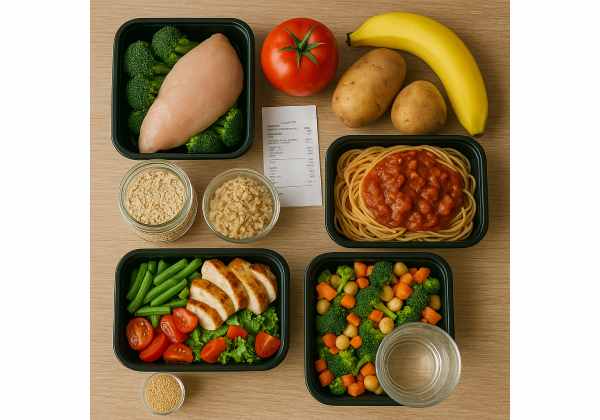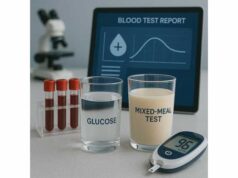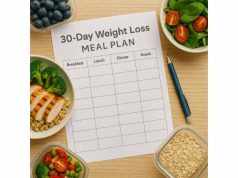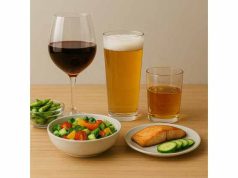
Eating for fat loss does not require boutique groceries or long recipes. With a short list of budget staples and a repeatable prep routine, you can hit protein and fiber targets, stay full, and keep your spend around \$50–\$70 for the week. This guide shows you how to set realistic calorie goals, shop strategically, and build a seven-day menu that is simple to cook and easy to repeat. If you want the bigger picture on calories, macro balance, and how to pace healthy weight loss before you start budgeting, skim our primer on calories, macros and meal plans. Then come back here to assemble the plan that fits your prices, taste, and schedule.
Table of Contents
- Budget weight loss meal plan basics
- Set your budget and calories
- Protein, fiber and cheap staples
- One-hour weekend prep
- Smart shopping and price tactics
- 7-day budget menu ($50–$70)
- Safety, swaps and adaptations
- Frequently Asked Questions
Budget weight loss meal plan basics
A budget plan does not mean “less food.” It means more planning and smarter volume. The goal is to pair low-cost proteins and high-fiber carbohydrates with vegetables and fruit so each meal feels generous while calories stay steady. Most adults do well on dinners around 400–600 calories, lunches around 400–550, and breakfasts around 300–450, depending on body size and activity. You will see those ranges reflected in the sample week.
What makes this plan filling:
- Protein anchors at each meal (25–40 g) to protect lean mass and curb cravings.
- Fiber and water from legumes, oats, potatoes with skin, whole grains, vegetables, and fruit to add volume without many calories.
- Measured fats (teaspoons, not “glugs”) so flavor stays high and portions stay honest.
What makes it affordable:
- Store brands and frozen produce. Same nutrition for less, year-round.
- Batch cooking. One hour on the weekend covers most of the week.
- Staples with long shelf life. Dry legumes, oats, rice, canned fish, canned tomatoes, and spice blends prevent waste.
- Flexible menus. The same base becomes chili, bowls, tacos, or pasta—different sauces, same macros.
Start with the plan below, then repeat it next week with two small changes (swap lentils for black beans; switch barley for rice). If you are new to weight loss or want a quick safety overview, our safe weight loss guide explains pacing and how to judge progress over weeks, not days.
Set your budget and calories
Before you shop, pick two numbers: your weekly spend and your calorie target. Those two constraints shape everything else.
1) Choose a realistic weekly spend
Target \$50–\$70 for one person using store brands and common U.S. prices for discount or big-box grocers. Prices vary by region; think of the totals here as templates. If your store runs higher, use the swap list and rely more on dry legumes, eggs, and canned tuna.
2) Set a calorie range, not a hard ceiling
Most adults progress on a 300–500 calorie daily deficit. If you are unsure where to start, use a two-week average of your current intake, then subtract 300–400 and reassess. Or pick a range that fits your schedule (e.g., 1,600–1,900 calories/day), check weekly averages for weight and waist, and adjust after 2–3 weeks if trends are flat. For a refresher on choosing numbers, see our concise guide to deficit steps that reduce hunger.
3) Turn calories into simple plates
Use this quick template for most meals:
- ½ plate vegetables or fruit
- ¼ plate lean protein (25–40 g)
- ¼ plate high-fiber carb (beans, lentils, oats, intact grains, potatoes with skin)
- 1–2 teaspoons oil or nuts for flavor
4) Price per serving math
A \$60 cart that yields 18–21 full meals comes out to roughly \$2.85–\$3.35 per meal, plus a few snacks. You will see that math in the sample week; each recipe lists modest portions that scale easily.
5) Build a micro-pantry
Salt, pepper, a basic spice blend (chili powder, garlic, paprika), and a small bottle of oil are “evergreen” items. Amortize them across weeks. If you are starting from zero, expect the first week to sit near the top of the budget, then drop the second week as those items carry over.
Protein, fiber and cheap staples
Lean protein and fiber are the two levers that make lower-cost meals feel generous. Here are budget choices that hit both.
Low-cost proteins (rough price per serving)
- Eggs — versatile and fast (2 eggs ≈ 12 g protein).
- Chicken thighs or drumsticks — often cheaper than breasts; trim visible fat after cooking.
- Canned tuna or sardines — shelf-stable protein with omega-3s.
- Dry lentils — cook in 20–25 minutes, no soaking; 18 g protein per cooked cup.
- Tofu — firm or extra-firm holds up to roasting and stir-fries.
- Greek yogurt (plain) — doubles as breakfast or a creamy sauce base.
- Peanut butter or powdered peanut butter — small amounts add protein and flavor to oats or sauces.
High-fiber, high-volume carbs
- Beans (black, pinto, chickpeas, kidney): 13–16 g fiber per cup cooked.
- Oats (rolled or quick): cheap breakfasts or savory savory oats with eggs.
- Potatoes with skin: very high satiety per calorie.
- Barley, brown rice, or bulgur: buy in bags, not instant cups.
- Frozen mixed vegetables and broccoli: no waste, same fiber and micronutrients.
- Cabbage, carrots, onions: low cost, last all week, build soups and slaws.
- Bananas and apples: predictable prices, easy portions.
Flavor boosters that pull their weight
- Canned tomatoes and tomato paste: base for chili, bolognese, soups.
- Salsa: brightens bowls and eggs, low calorie per tablespoon.
- Lemon or vinegar: acid replaces some oil while keeping flavor high.
- Dried herbs and basic spice blends: make the same base taste “new.”
If you want a bigger list of protein-forward foods and serving sizes to mix and match, browse our practical high-protein foods list.
One-hour weekend prep
An hour on Sunday eliminates most weeknight decisions. Use this time block to cover protein, a grain, a legume, and two vegetables. After that, dinners are assembly, not recipes.
60-minute flow
- Start the oven at 220°C/425°F.
- Sheet pan 1 (protein): chicken thighs (or tofu) tossed with salt, pepper, paprika, garlic powder. Roast 20–25 minutes, flipping once.
- Stovetop pot (grain): cook 2–3 cups dry barley or brown rice with salt; cool on a tray.
- Stovetop pot (legume): simmer dry lentils with onion and bay leaf 20–25 minutes; salt at the end.
- Sheet pan 2 (vegetables): broccoli and carrots with 1–2 teaspoons oil total; roast 15–18 minutes.
- Cold prep: chop cabbage, onion, and cilantro for a slaw; whisk yogurt-tahini-lemon sauce and a quick salsa-lime dressing.
Portion and store
- Shallow containers cool food faster and keep textures better.
- Freeze half the cooked grain or lentils if you tend to get bored by day four.
- Keep sauces in small jars; they stretch flavor with minimal calories.
Breakfast prep (optional)
- Overnight oats with Greek yogurt, oats, frozen berries, and chia.
- Egg bake with potatoes, onions, and spinach; cut into squares.
For a complete walkthrough that fits this style, our one-hour weekend plan pairs batch cooking with four plug-and-play dinners.
Smart shopping and price tactics
Use these tactics to keep your cart near \$60 without sacrificing fullness.
Buy formats that save
- Dry vs. canned: dry lentils and beans (if you batch cook) cost far less per serving. Canned is still fine when time is tight—just rinse to reduce sodium.
- Whole vs. cut: whole carrots, onions, cabbage, and potatoes are cheaper than pre-cut blends.
- Frozen vs. fresh: frozen broccoli, peas, mixed vegetables, and berries are budget-friendly and reduce waste.
Price-first swaps
- If chicken prices spike, swap tofu or eggs that week.
- If berries are high, choose bananas and apples and add citrus for brightness.
- If rice increased, buy barley or bulgur—often cheaper per gram of fiber.
Use volume to your advantage
High-volume foods help you feel full on fewer calories. Build half your plate from vegetables and fruit and use legumes and intact grains for the carb quarter. For more ideas, see our guide to high-volume, low-calorie foods that make meals feel bigger without stressing your budget.
Label shortcuts that save money
- Unit pricing on shelf tags tells you the real deal (price per ounce/100 g).
- Protein per dollar: compare grams of protein per unit cost across options.
Waste control
- Plan one “use-it-up” skillet on day six or seven for any leftover vegetables.
- Keep a soup bag in the freezer for onion ends, celery leaves, carrot peels; simmer for a free broth on the weekend.
7-day budget menu ($50–$70)
Below is a complete week designed to average 1,600–2,000 calories/day for many adults, with 100–150 g protein/day and 30–40+ g fiber/day. Adjust portions to match your calorie range. Prices reflect typical U.S. discount-store brands; substitute freely to match local costs.
Assumed pantry (amortized): salt, pepper, basic spice blend, chili powder, garlic powder, oil, vinegar, soy sauce or tamari.
Sample grocery list (target ~\$60)
- Dry lentils (2 lb) — \$3.50
- Brown rice or barley (2 lb) — \$2.50
- Rolled oats (2 lb) — \$3.00
- Canned black beans (4 cans) — \$4.00
- Canned tuna (4 cans) — \$4.80
- Chicken thighs (3 lb) — \$6.50
- Eggs (1.5 dozen) — \$4.00
- Firm tofu (2 x 14 oz) — \$4.00
- Greek yogurt, plain (32 oz) — \$5.00
- Frozen mixed vegetables (2 lb) — \$4.00
- Frozen broccoli (2 lb) — \$4.00
- Cabbage (1 head) — \$2.50
- Carrots (2 lb) — \$2.00
- Onions (3 lb) — \$2.00
- Potatoes (5 lb) — \$3.50
- Bananas (3 lb) — \$2.00
- Apples (3 lb) — \$4.50
- Canned tomatoes (2 x 28 oz) — \$3.00
- Tomato paste (2 small cans) — \$1.40
- Whole-wheat tortillas (10 ct) — \$2.00
- Peanut butter (16 oz) — \$2.50
- Salsa (16 oz) — \$2.00
Estimated total: ~\$66 (first week). Weeks 2–3 usually drop to ~\$55 as pantry items carry over.
7-day menu (swap days as needed)
Breakfast options (choose one daily, ~300–450 calories, 20–35 g protein)
- Overnight oats with Greek yogurt, oats, frozen berries, and 1 teaspoon peanut butter.
- Scramble: 2 eggs + 150 g tofu with onions and frozen broccoli; 1 small potato.
- Tuna-yogurt toast (tuna mixed with Greek yogurt, lemon, and pickles) on a tortilla; piece of fruit.
Lunch options (choose one daily, ~400–550 calories, 25–40 g protein)
- Lentil-tomato stew with carrots and onions; side of cabbage-apple slaw.
- Chicken-rice bowl: roasted chicken, brown rice/barley, frozen vegetables, salsa-lime dressing.
- Tofu-veggie stir-fry over barley with soy-ginger; fruit.
Snack options (150–250 calories, 10–25 g protein)
- Greek yogurt with banana.
- Cottage cheese (if in budget) or extra Greek yogurt + apple.
- Edamame (if available) or a small protein shake (optional).
Dinner rotation (400–600 calories, 30–40 g protein, 8–15 g fiber)
- A) Turkey-free chili: lentils + black beans + canned tomatoes + onion + chili spices; top with yogurt.
- B) Sheet-pan lemon chicken with broccoli and potatoes; salsa on the side.
- C) Tofu fajita tacos: roasted onions/peppers (or mixed vegetables), crisped tofu strips, tortillas, salsa, cabbage slaw.
- D) Tuna-white bean skillet: canned tuna with white beans (swap from list), tomatoes, spinach (optional), lemon.
- E) Lentil-bolognese over high-fiber barley or whole-wheat tortillas (torn into “noodles”).
Example week using the rotation
- Day 1: Breakfast oats; Lunch chicken-rice bowl; Dinner Chili (A).
- Day 2: Eggs + tofu scramble; Lentil stew; Tofu tacos (C).
- Day 3: Oats; Chicken-rice bowl; Tuna-bean skillet (D).
- Day 4: Tuna-yogurt toast; Lentil stew; Sheet-pan chicken (B).
- Day 5: Oats; Tofu stir-fry; Lentil-bolognese (E).
- Day 6: Eggs + potato; Chicken-rice bowl; Chili (A).
- Day 7: Oats; Leftovers or “use-it-up” skillet; Tofu tacos (C).
Portion guides (no scale required)
- Protein: palm-size portion for women, 1–2 palms for men.
- Grains or potatoes: ½–1 cupped hand cooked (30–60 g carbs).
- Beans or lentils: ½–1 cup.
- Vegetables: at least 2 cups cooked or raw per meal.
Per-meal cost estimates (rounded)
- Breakfasts: \$0.70–\$1.20
- Lunches: \$1.50–\$2.20
- Dinners: \$2.00–\$2.90
- Snacks: \$0.80–\$1.20
For a more structured seven-day lineup (including alternate recipes and portions for different calorie targets), see our 7-day high-protein plan and adapt the ingredients to your weekly sale items.
Safety, swaps and adaptations
This plan works because it is flexible. Use the swaps below to match preferences, allergies, and medical needs.
Vegetarian or vegan
- Keep lentils, beans, tofu, and peanut butter as core proteins.
- Layer plant proteins to hit 25–40 g per meal (e.g., lentils + tofu, beans + yogurt-style soy).
- Consider fortified plant milks or a B12 supplement per your clinician’s advice.
Gluten-free
- Choose corn tortillas; rely on rice, potatoes, quinoa, and buckwheat.
- Check labels on soy sauce (use tamari if needed).
Dairy-free
- Use tahini-lemon in place of yogurt sauces.
- Blend silken tofu for creamy dressings.
Higher-activity weeks
- Add 20–40 g extra carbs around workouts (banana, oats, or an extra potato) while keeping protein steady.
Medical considerations
- If you have diabetes, kidney disease, or take medications affecting appetite or blood glucose, coordinate targets with your clinician or a dietitian before changing macros or cutting calories.
Portion control without tracking
- Use the plate method at each meal: ½ vegetables/fruit, ¼ protein, ¼ high-fiber carb, plus 1–2 teaspoons oil or nuts.
- If weight or waist stalls for 3–4 weeks, tighten oil, nut butter, and cheese portions first, then adjust carbs by 20–30 g per day.
Frequently Asked Questions
Can I really keep groceries to \$50–\$70 and still eat enough protein?
Yes—if you rely on store brands and base meals on eggs, chicken thighs, tofu, lentils, and canned tuna. Each provides low cost per gram of protein. Batch cooking and frozen vegetables cut waste, which is where many budgets leak.
How many calories should I aim for on this plan?
Pick a range rather than a hard ceiling. Many adults progress at 1,600–2,000 calories/day, but needs vary. Start where you can sustain 25–40 g protein per meal and 30–40+ g fiber/day, review weekly averages for weight and waist, then adjust by 100–150 calories if needed.
What if prices in my area are higher than this list?
Keep the structure and swap protein by price: more lentils, eggs, tofu, and canned fish; less fresh meat when prices spike. Favor frozen vegetables and fruit, bulk grains, and discount store brands. The template works at \$70–\$85 with the same recipes.
I get hungry at night on a budget plan. What should I add?
Add a protein-forward snack (150–250 calories) after dinner: Greek yogurt with fruit, cottage cheese, or a soy/whey shake. Ensure dinner includes 8–15 g fiber (beans, intact grains, or potatoes with skin) and at least 25–35 g protein to reduce late-night cravings.
Can I eat out while following this budget plan?
Yes—treat it as a planned swap. Anchor the day with a protein-rich breakfast and a vegetable-heavy lunch, then choose a protein entrée with a vegetable side at dinner. Share fries or dessert, and keep drinks simple. Offset by using more lentil-based meals at home that week.
Do I have to track calories or macros to make this work?
No. The plate method and repeating a short list of meals can be enough. Track for 7–10 days only if progress stalls; tighten high-calorie extras (oils, nut butters, cheese) first. If you like numbers, use them, but the system succeeds without them.
References
- Aim for a Healthy Weight 2025 (Guideline)
- Diabetes Meal Planning | Diabetes | CDC 2024 (Guideline)
- Clinical Evidence and Mechanisms of High-Protein Diet-Induced Weight Loss 2020 (Systematic Review)
- Effect of viscous fiber supplementation on obesity indicators in individuals consuming calorie-restricted diets: a systematic review and meta-analysis of randomized controlled trials 2021 (Systematic Review)
Disclaimer
This article provides general nutrition education and budgeting guidance. It is not a substitute for personalized medical advice, diagnosis, or treatment. If you have chronic conditions, food allergies, diabetes, kidney disease, are pregnant or breastfeeding, or have a history of eating disorders, consult your healthcare professional before changing your diet.
If this guide helped you, please share it with someone who wants to eat well on a budget, and consider following us on Facebook, X, or whichever network you use for calm, practical meal ideas and weekly shopping tips.










